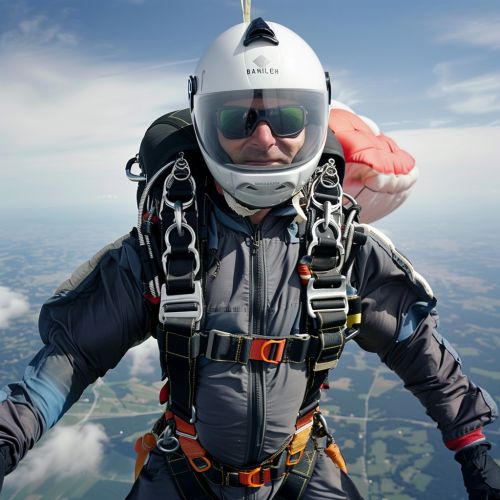Skydiving
History
Skydiving, also known as parachuting, is an activity that involves the use of a parachute to slow a person's fall from a high altitude. The history of skydiving dates back to the 18th century when Frenchman André-Jacques Garnerin made successful descents using a canvas canopy and a small basket tethered beneath a hot-air balloon. The first true parachute jump was made by Garnerin from a balloon at Paris in 1797More on History of Skydiving.
Equipment
The primary piece of equipment used in skydiving is the parachute. Modern parachutes are rectangular or elliptical in shape and are made from a lightweight fabric. A typical parachute system includes a main canopy, a reserve parachute, and a container to hold these systems. The skydiver wears a jumpsuit, helmet, and sometimes gloves. The equipment also includes an altimeter and an Automatic Activation Device (AAD) which can automatically deploy the reserve parachute at a preset altitude if the skydiver fails to do soMore on Skydiving Equipment.


Training
Before a person can skydive solo, they must undergo training. This can take several forms, but all involve instruction on how to handle the parachute system, exit the aircraft, freefall, steer the parachute, and land safely. The most common training methods are Tandem skydiving, Static line skydiving, and Accelerated Freefall (AFF)More on Skydiving Training.
Techniques
There are several techniques that skydivers use to control their movement in the air and their landing. These include freeflying, freestyle skydiving, and canopy piloting. Freeflying is a type of skydiving where the diver falls in any orientation besides the traditional belly-to-earth position. Freestyle skydiving is a type of skydiving in which the skydiver performs acrobatic maneuvers during freefall. Canopy piloting involves the use of a small, fast parachute to perform maneuvers at high speed and close to the groundMore on Skydiving Techniques.
Safety
While skydiving is considered a high-risk activity, safety measures have made the sport safer over the years. These include the use of modern parachute technology, rigorous safety training, and strict regulations. Despite these measures, accidents and fatalities do occur, often due to equipment failure or human errorMore on Skydiving Safety.
Competitions and Records
Skydiving has grown into a competitive sport with several disciplines, including formation skydiving, freeflying, skysurfing, and wingsuit flying. The sport is governed internationally by the Fédération Aéronautique Internationale (FAI). The FAI also maintains records for the highest skydive, the longest freefall, and other categoriesMore on Skydiving Competitions and Records.
